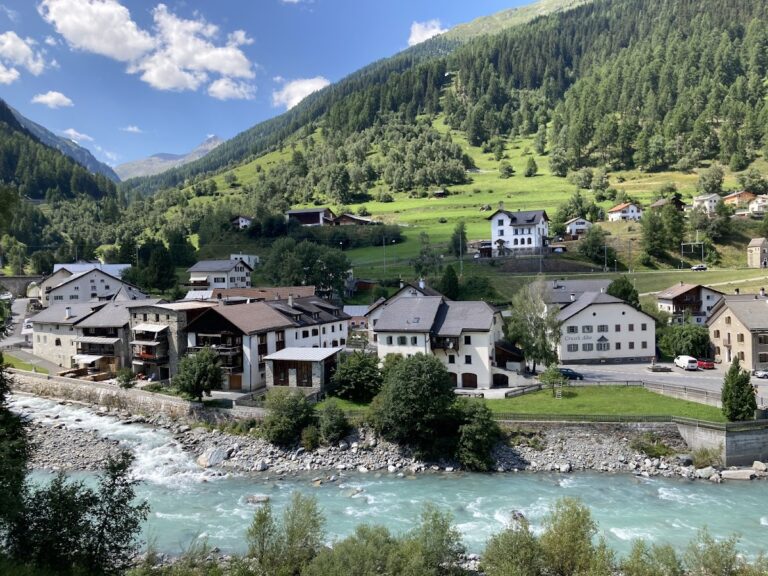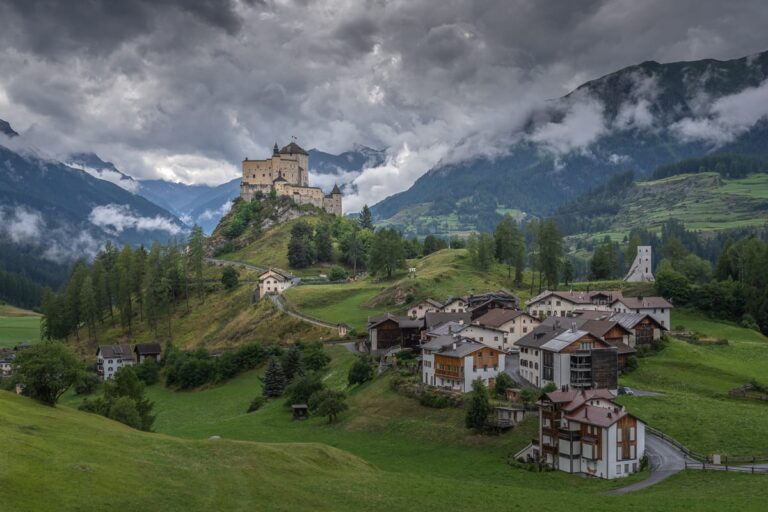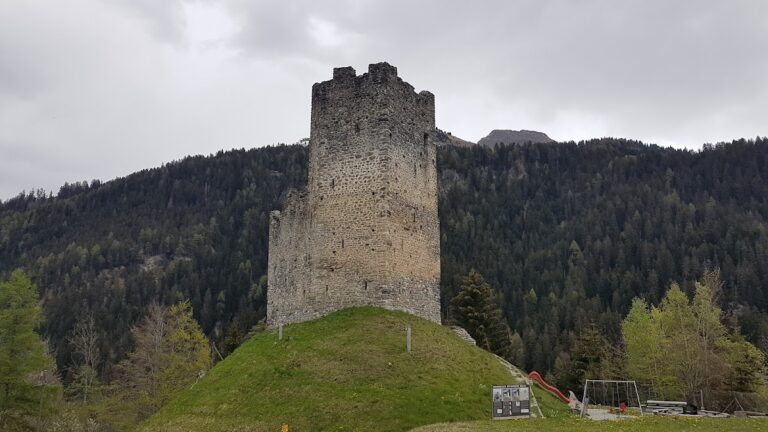Guardaval Castle: A Medieval Administrative Stronghold in Switzerland
Visitor Information
Google Rating: 4.4
Popularity: Very Low
Google Maps: View on Google Maps
Country: Switzerland
Civilization: Unclassified
Remains: Military
History
Guardaval Castle is located near Madulain in present-day Switzerland. It was established in the mid-13th century by the Bishop of Chur, Volkard von Neuenburg, as part of his authority over the Upper Engadine region. The castle was constructed around 1250 to control a key mule track connecting Zuoz to the Albula Pass, enabling the bishop’s administration to collect tolls from travelers and manage his estates.
Initially, Guardaval began as a single main tower designed to assert episcopal presence. During a subsequent building phase, additional defensive and residential structures were added, including a surrounding curtain wall, a gatehouse on the southern side, an outer courtyard called a zwinger, and living quarters to the east. These expansions reinforced the castle’s role as a local administrative center while securing the area against potential threats.
In the 14th century, the castle’s ownership shifted to the Planta family from nearby Zuoz, who held it under conditions set by the bishop. The Plantes were influential landowners involved in regional industries like mining and fishing. They allied themselves with the League of God’s House, a political alliance formed in 1367 that sought to limit the power of the bishop. Despite their growing autonomy, the bishop required the Planta family to maintain the castle and keep it ready for military purposes.
Financial difficulties led the bishop to pledge Guardaval to the League of God’s House in 1409. This transfer marked the decline of the castle’s importance as an administrative hub. Soon afterwards, the site was abandoned sometime before 1500. Historical accounts from around 1550 note that the castle remained mostly intact but deserted, and by the early 1600s it had fallen into ruin.
In the 19th century, a restaurant was built on the grounds of the old castle, causing significant damage to the southern defensive walls and gatehouse. This building was later removed during restoration efforts that began in 1935, aimed at stabilizing the ruins. Further conservation work took place between 2005 and 2006.
Local folklore mentions a harsh bailiff who supposedly lived at the castle, but these stories are not supported by historical records. The Planta family, its known custodians, generally maintained positive relations with neighboring communities.
Remains
Guardaval Castle occupies a rocky outcrop at an elevation of 1785 meters to the west of Madulain. The site’s layout centers on a main tower, known as a bergfried, originally built in the mid-13th century. This tower stands roughly 10 meters tall and features a high entrance on its second floor facing southeast. The interior lacks evidence of permanent living spaces but includes narrow arrow-slit windows with benches angled inward, allowing natural light. Near the top, beam holes reveal the former presence of a wooden gallery or balcony, likely used for surveillance and defense. The tower’s stone walls still show patches of medieval plaster with visible trowel marks. A clear masonry joint marks where the initial freestanding tower was later joined by a surrounding ring wall.
The ring wall encloses an irregular rectangular courtyard, with the bergfried forming much of the western boundary. On the southern side once stood a gatehouse and a small zwinger—an outer defensive courtyard designed to slow attackers. This southern section suffered major destruction when the restaurant was built in the 19th century, resulting in loss of much original masonry.
Within the courtyard, the western side contains remains of a long building subdivided into smaller spaces. Archaeologists interpret this structure as having housed living quarters as well as stables. To the east, a residential wing remains visible, consisting of two large rooms likely used for accommodation or administrative functions. Defensive measures included a ditch on the mountain-facing northern side, enhancing protection against assault.
Despite damage caused by the 19th-century construction on the site, restoration campaigns beginning in 1935 have worked to stabilize and preserve the ruins. Further restoration efforts in the early 21st century have helped secure the remains, allowing the main architectural elements of Guardaval Castle to be studied and appreciated as a medieval administrative stronghold.







